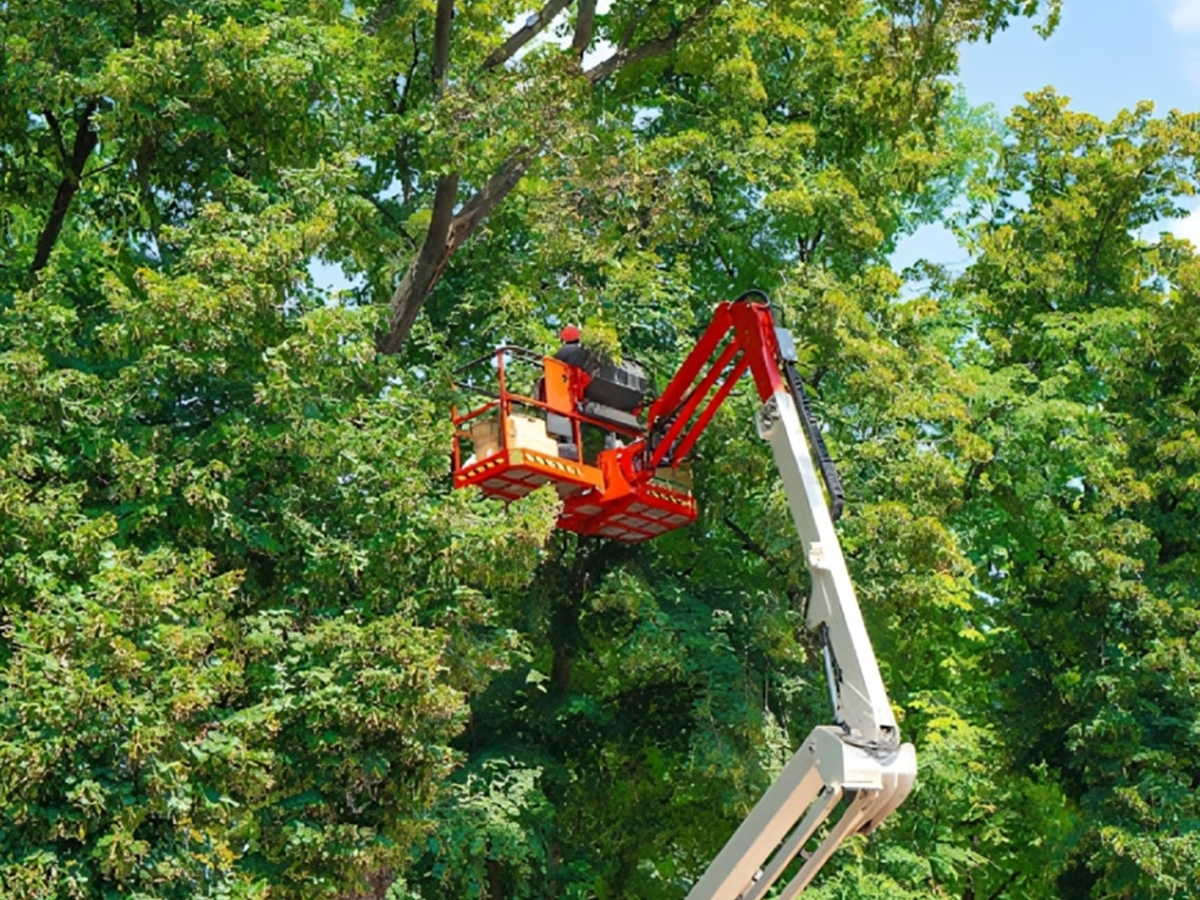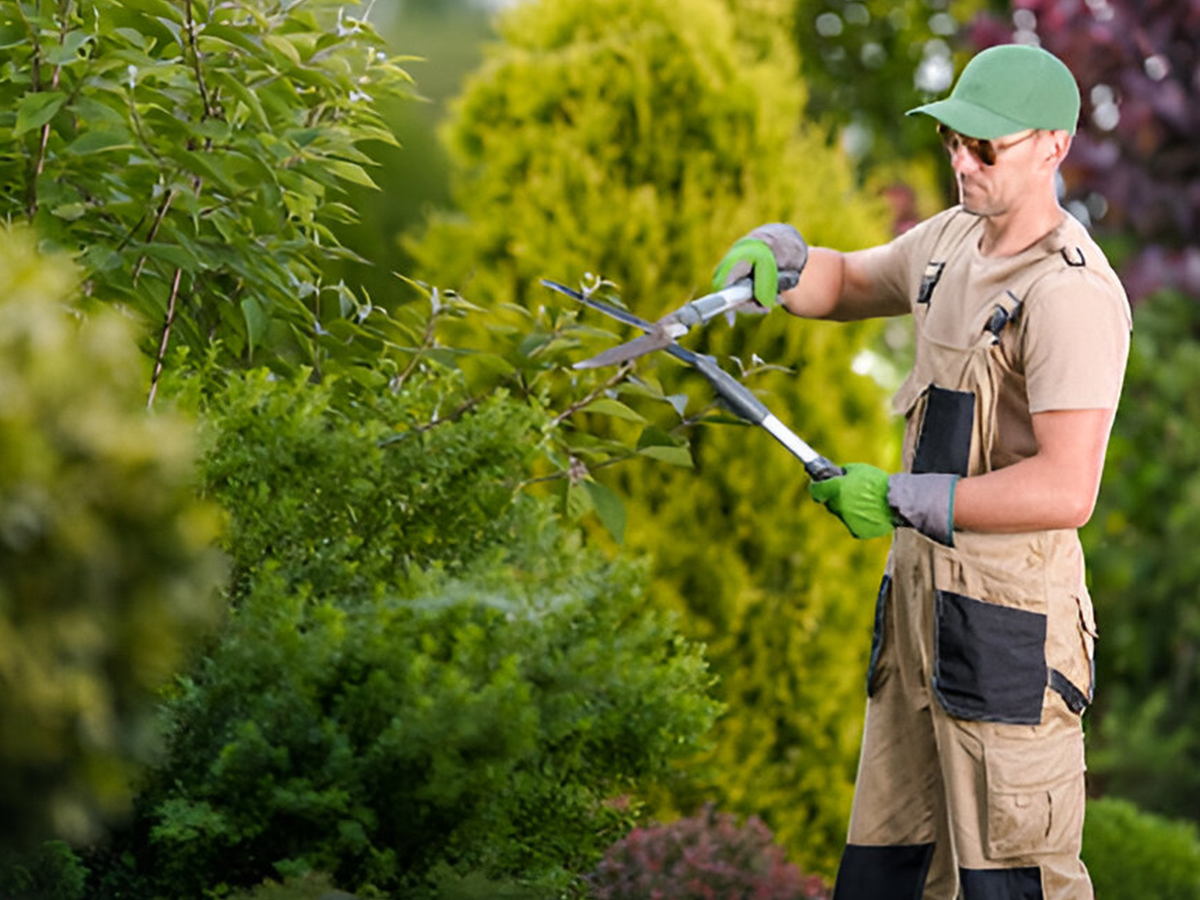Pruning trees isn’t just about maintaining their health – it’s also an art form that can dramatically enhance the visual appeal of a landscape. According to a post in Malcarne, homes with well-groomed trees are often perceived as better maintained, signalling to buyers that the property has been cared for.
This perception can boost curb appeal and potentially increase property value. Let’s explore the intricacies of aesthetic pruning and how it can transform trees into stunning focal points in any landscape.
The Art of Aesthetic Pruning
Aesthetic pruning goes beyond basic maintenance; it’s a thoughtful approach to shaping trees in a way that highlights their natural beauty while complementing the surrounding environment.
The primary goal is to strike a balance between allowing the tree’s natural form to shine and applying subtle human intervention to enhance its appearance. This process requires a deep understanding of tree anatomy and growth patterns, as each species has unique characteristics that can be accentuated through careful pruning.
Respecting the Tree’s Natural Structure
One of the key aspects of aesthetic pruning is respecting the tree’s natural structure. Instead of imposing unnatural shapes, the goal is to refine the tree’s form by removing unwanted branches and encouraging desirable growth.
This might involve thinning dense areas to create a more open canopy, reducing the height or spread to maintain proportion, or selectively trimming to highlight the tree’s inherent architectural features.
Enhancing the Landscape Design
Aesthetic pruning also involves considering the tree’s role in the overall landscape design. Whether the goal is to create a serene garden retreat or a bold statement piece, the way a tree is pruned can significantly impact the visual harmony of the space.
By enhancing the tree’s natural grace and character, aesthetic pruning turns each tree into a living sculpture, contributing to a cohesive and visually appealing landscape.
Types of Pruning Techniques
Pruning techniques vary widely and each serves a specific purpose in enhancing a tree’s aesthetic appeal. Understanding these techniques is essential for achieving the desired visual effect in your landscape.
- Crown Reduction
One method of reducing a tree’s overall size is crown reduction. By carefully pruning down branches from the top and sides, the tree’s height and spread can be decreased without sacrificing its organic form.Crown reduction is ideal for trees that have grown too large for their location or are encroaching on structures. It also helps to balance the weight distribution of the tree, preventing potential damage from heavy branches.When performed correctly, crown reduction preserves the tree’s aesthetics and health, ensuring it remains a beautiful focal point in the landscape.
- Crown Thinning
The process of crown thinning is the deliberate removal of branches from various parts of the canopy in order to improve airflow and light penetration. By lowering density, this method improves the tree’s natural shape and gives the foliage a lighter, more flowing appearance.Thinning is particularly useful for dense canopies that block sunlight from reaching the ground or other plants. It also reduces wind resistance, which can help prevent storm damage.By focusing on removing crossing or crowded branches, crown thinning promotes a more open and airy appearance, allowing the tree’s unique structure to stand out.
- Crown Raising

Crown raising is the process of removing the lower branches of a tree to lift the canopy. This technique creates more space beneath the tree, making it suitable for areas where clearance is needed, such as over walkways, driveways, or near buildings.
Crown raising not only improves accessibility but also enhances the tree’s visual appeal by elongating the trunk and revealing its natural form. It’s essential to carefully select which branches to remove, as over-pruning can lead to an unbalanced appearance.
When done properly, crown raising can highlight the tree’s majestic structure and add a sense of height and elegance to the landscape.
- Espalier and Topiary
For those looking to explore creative and artistic pruning styles, espalier and topiary offer unique options. Espalier involves training a tree or shrub to grow flat against a wall or trellis, creating a two-dimensional shape. This technique is perfect for small spaces and can add an element of sophistication to a garden.Topiary, on the other hand, involves shaping trees or shrubs into intricate designs, such as animals, geometric shapes, or whimsical forms. Both techniques require a high level of skill and patience, as they involve careful planning and regular maintenance. When executed well, espalier and topiary can transform ordinary plants into extraordinary works of living art.
DIY vs. Professional Pruning: Making the Right Choice
Pruning trees can be a rewarding DIY project, but it’s important to know your limits. While simple tasks like removing small, dead branches can be safely handled by most homeowners, more complex pruning jobs may require professional expertise.
- Pros and Cons of DIY Pruning
DIY pruning allows you to maintain your trees according to your personal aesthetic preferences and schedule. It can also be a cost-effective option if you have the necessary tools and knowledge.However, improper pruning techniques can harm the tree’s health, leading to poor growth or even death. Working with tall trees or using heavy equipment can also pose safety risks.
- When to Hire a Professional Arborist

For more complicated pruning needs, such as crown reduction, crown thinning, or aesthetic shaping like topiary, hiring a professional arborist is often the best choice. Arborists have the training and experience to assess the health of your trees and determine the most appropriate pruning techniques.
They also have the proper tools and safety equipment to handle difficult jobs safely. For residents seeking quality tree service in Aurora, professional arborists can provide tailored care that enhances both the beauty and longevity of their trees.
- Cost Considerations and Long-Term Benefits
While hiring a professional may seem costly upfront, it can save money in the long run by preventing damage to your trees and property. Well-pruned trees are healthier, more resilient to pests and diseases, and less likely to suffer from storm damage.
Bring Out the Beauty of Your Trees
Pruning is an essential practice that not only enhances the visual appeal of your landscape but also promotes the health and safety of your trees. For expert tree pruning in Aurora, trust the professionals at Dave Lund Tree Service. Call (905) 775-1020 today to schedule a consultation and let your trees reach their full aesthetic potential!

